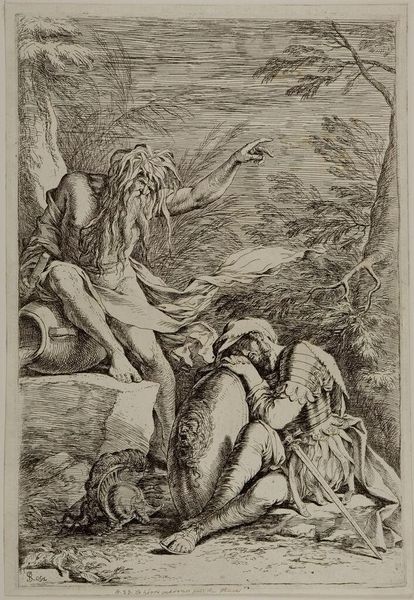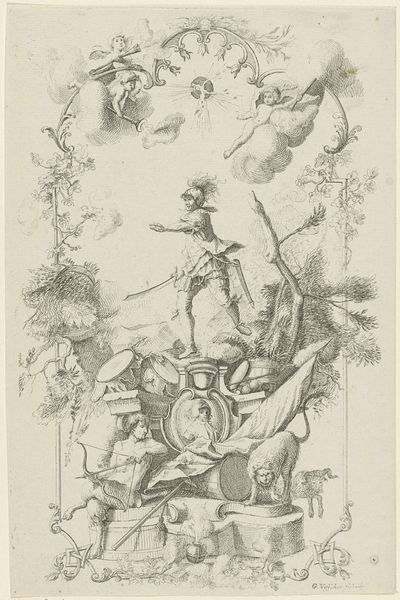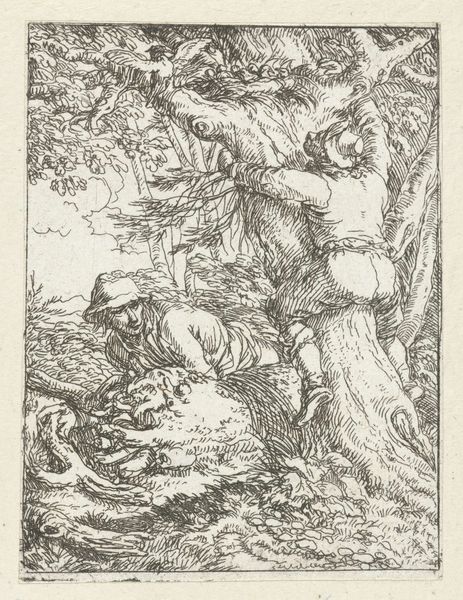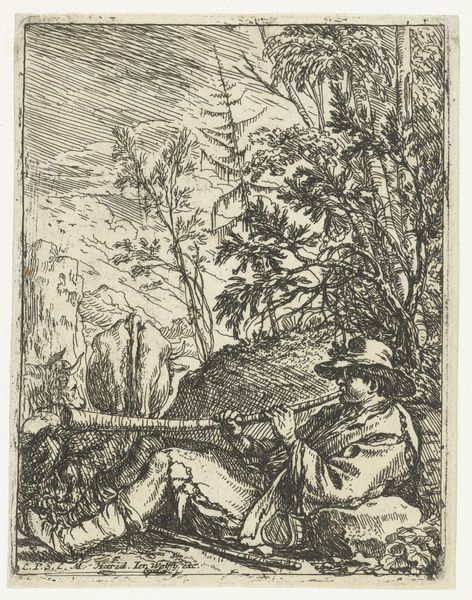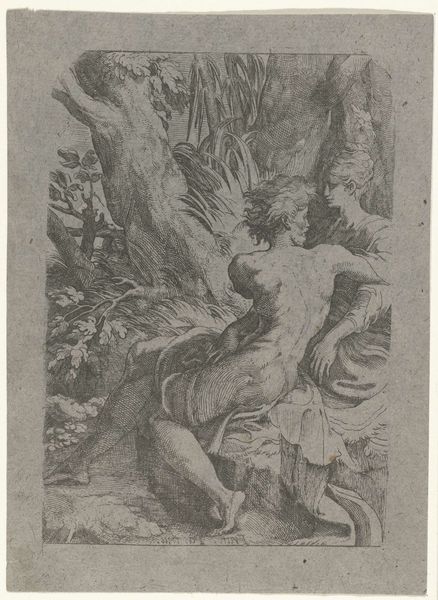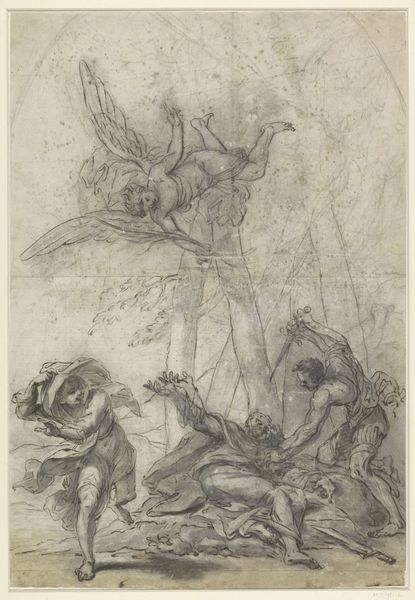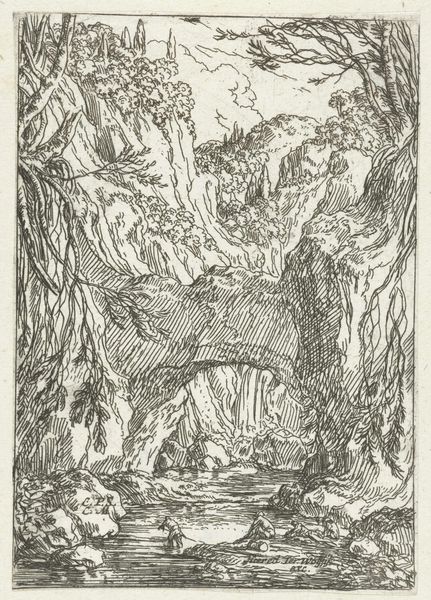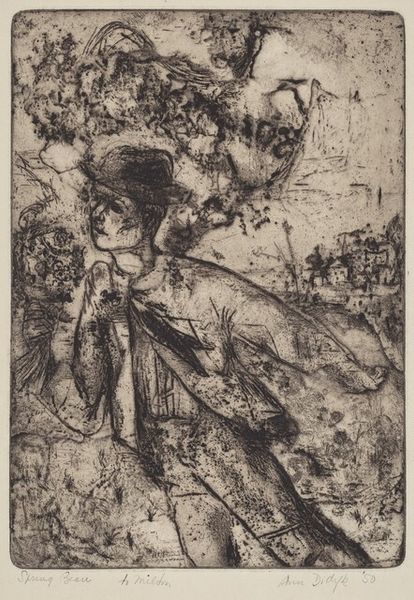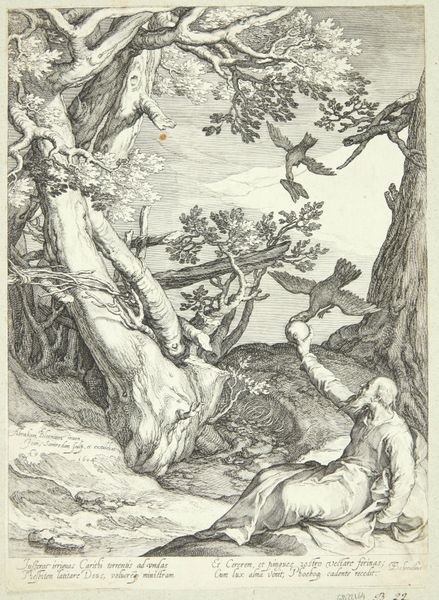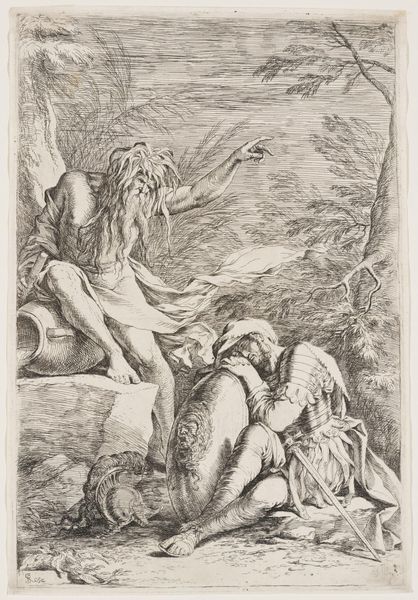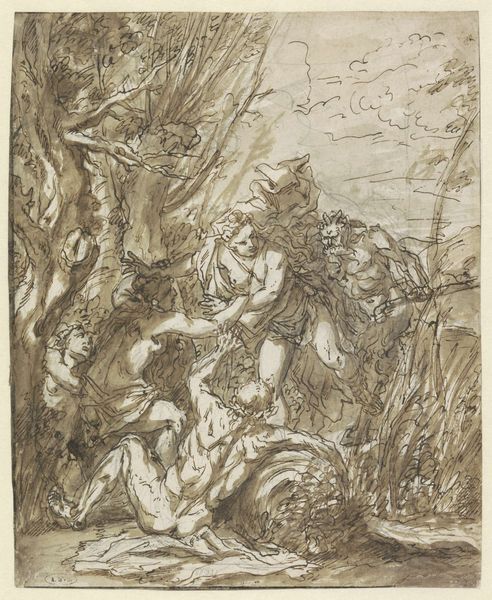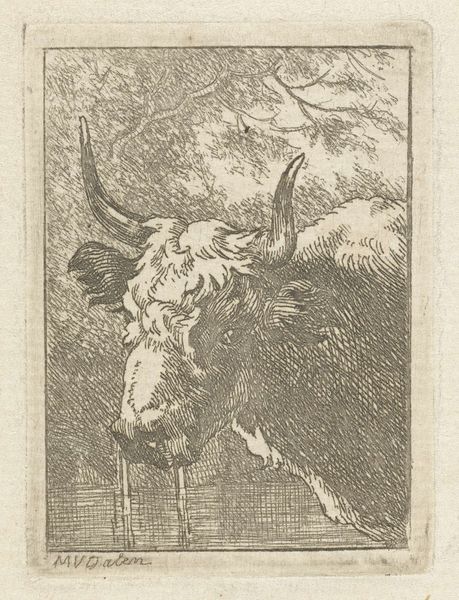
drawing, etching
#
drawing
#
baroque
#
etching
#
figuration
#
genre-painting
Copyright: Public Domain: Artvee
Curator: This etching, "The Small Lion Hunt" by Rembrandt van Rijn, from around 1629, is fascinating, isn't it? The frenzy of lines is immediately striking. Editor: It is! It looks like pure chaos, a snapshot of uncontrolled violence. The energy is almost overwhelming for such a small piece. What do you see in this, beyond the surface level? Curator: Well, I think it’s vital to situate it within its historical moment. Remember, the 17th century in Europe was rife with social hierarchies deeply intertwined with notions of power and control over both humans and the natural world. Lion hunts were often staged displays of dominance, reinforcing class structures and masculine ideals. Editor: So you’re saying this isn’t just a depiction of a hunt, but also a commentary on the societal power structures of the time? Curator: Precisely. Think about who would have commissioned or owned a piece like this. Probably wealthy landowners, nobility—people who directly benefited from the existing social order. By depicting this hunt, Rembrandt is not just showing us an event; he's implicitly acknowledging and engaging with these power dynamics. He's inviting us to examine the accepted violence inherent in maintaining those hierarchies. Does that give you a different perspective? Editor: Definitely! Seeing it as a critical engagement with power makes the piece much more compelling. I was too focused on the action, the hunt itself, but missing the broader socio-political context. Curator: It’s about disrupting those narratives. Art has that kind of disruptive agency; it challenges established concepts about identities, whether that relates to class, gender, or race, etc. Editor: I appreciate the insights into the socio-political elements, it reframes my reading of this piece completely. Curator: That’s the beauty of engaging with art—it constantly reveals new ways of understanding the world around us.
Comments
No comments
Be the first to comment and join the conversation on the ultimate creative platform.
